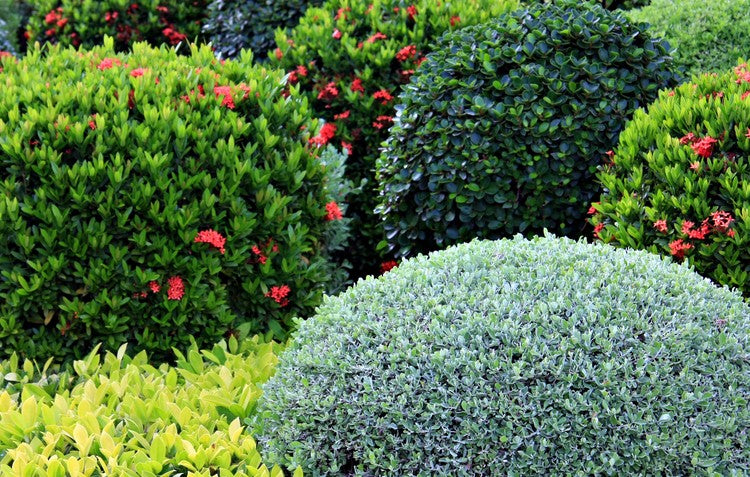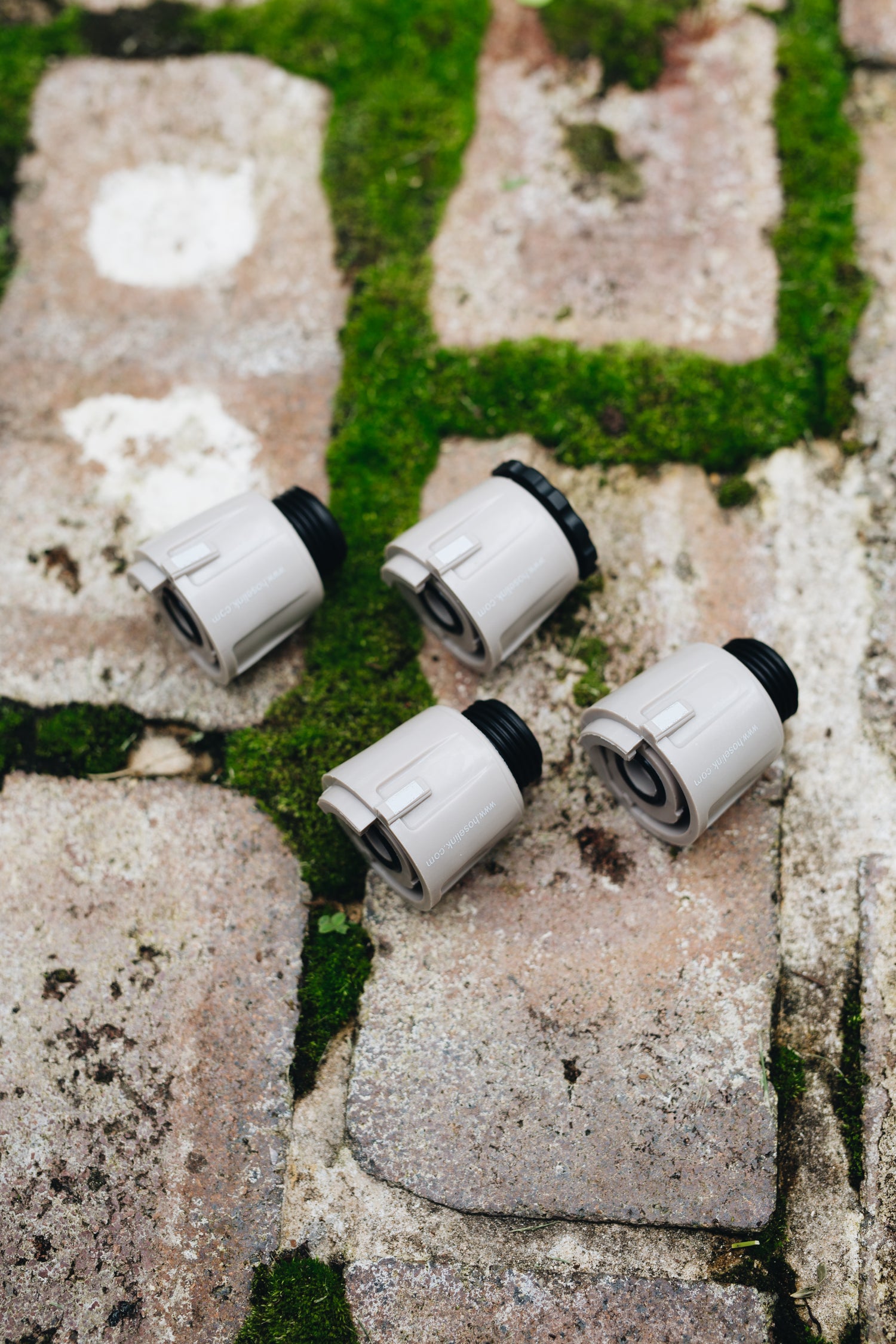Evergreens are a fundamental part of any garden, no matter where you live or what type of outdoor space you have. The beauty of evergreens is that they maintain their foliage across consecutive seasons, which means you won’t have leaves or branches to pick up and you’ll be guaranteed vibrant color across your garden throughout the year.
Most evergreen trees tend to be more tolerant to drought, cold weather and even nutrient-deprived soil, meaning they demand much less maintenance than deciduous plants and trees. They also offer privacy for your outdoor space and serve as a source of food and shelter for wildlife that frequent your home. To discover the best species to grow, when to grow them and how to manage their growth across the year, read on below.

Planting evergreen shrubs – what to consider
Before deep-diving into your new project, there are a few factors to consider that will determine how you approach planting and growing evergreen shrubs, and which species to choose. These include:
- Your location on the USDA Hardiness Zone Map
- Sun and shade exposure on your property
- Soil drainage in your garden
- Your soil type
- You soil pH level
- Your outdoor growing space
- The needs of the species you choose (watering schedule/fertilizing/pruning)
Only when you have a solid understanding of these should you decide which variety to plant in your garden.
Soil for evergreen shrubs
Evergreen shrubs are generally at their healthiest when grown in acidic soils as this allows the shrub to absorb nutrients more effectively. If your soil is alkaline, you can lower its pH (make it more acidic) with elemental sulfur or mulch. Our top pick is pine-based mulch. However, if your soil is neutral and only requires a small boost, adding organic substances like manure, moss, leaf litter or compost should do the job. When altering your soil’s acidity levels, be sure to maintain the soil’s natural moisture with deep watering 2-3 times per week for the first few months while your evergreens are developing.

Fertilizing evergreen shrubs
We don’t recommend fertilizing freshly planted evergreens until their second full growing season. In the first year of growth, the shrub is settling into its new home with much of the focus on establishing root strength, whereas fertilizing will stimulate growth above the soil, which would not be practical for a freshly planted shrub.
Watering evergreen shrubs
For shrubs to establish themselves in a new home, they require a consistent watering schedule. Straight after planting, be sure to give deep water to the surrounding area where you’ve planted. This will lay the foundation for a healthy root system. Along with regular watering of your soil and the shrub itself, continue to deep water once a week until winter. Intermittent rainfall is usually not enough to provide adequate nourishment to shrubs in their first year of growth, especially for well-drained soil, so don’t take the hose or sprinkler for granted!
How to prune evergreen shrubs
When you're planning out the way you want your garden to look, it’s critical that you pay attention to how tall and wide your evergreens may get. That cute baby-looking shrub won't stay small forever, hence the need to monitor growth every few days for the first 2-3 months to avoid a maintenance nightmare where you could end up pruning constantly. Favorably, many varieties of evergreen shrubs have been developed to remain neat and compact against the outline of a house as a foundation plant or amongst garden beds, walkways and courtyard steps.

The best evergreen shrubs to grow:
Inkberry holly
Inkberry holly is a dwarf evergreen that’s native to North America. Inkberry grows in a solid, compact ball shape with leafy branching that extend down to ground level, so it never looks bare or unembellished. Inkberry Holly prefers moist acidic soil, making it a great option for wetter locations like woodland garden settings or gardens with nearby ponds and waterways. Planting multiple inkberry plants can create an evergreen hedge look, which can also be great for decorating. Since they’re small, dense and bushy in appearance, you’ll find that they’re able to withstand longer periods of shade.

Mountain laurel
This evergreen is often chosen for its vibrant, colorful flowers that bloom come springtime, but what really bumps up their size and value in the garden is the thick, lustrous leaves that grow far and wide. Their unmissable cup-shaped flowers come in a variety of shades from white to rose, and even purple, which peak between May and June. Ensure these are grown in full or majority sunlight with only partial shade and in moist, thoroughly-drained soil. These evergreens make a stunning addition to cottage-style gardens and underneath tall trees.

Winter heath
This hardy evergreen shrub is adored for its delicate, razor-thin foliage and durable bands of bell-shaped pastel pink blooms that appear in winter. The flowers are then trailed by new foliage come spring, which turns to a rich, earthy green color. This free-flowing, low-growing shrub is fantastic for ground cover and rock garden set-ups. Its penchant for sharp drainage also works as a suitable option for growing on slopes, just remember that flowering occurs best in full sun, though some shade in the summer months is much appreciated.

Bearberry
This robust, low-growing shrub is notorious for its small, curved leaves, gatherings of pot-shaped pink and white blooms, and its bright red berries that flourish in spring and winter respectively. These shrubs cope exceptionally well in winter and aren’t troubled by adverse weather conditions or specific types of soil, making them a great choice for challenging locations because of their ability to endure and adapt. They also serve as a useful tool in managing soil erosion or providing natural aesthetic to rocky locations.

Cotoneaster
'Coral Beauty' as it’s commonly referred is a popular evergreen shrub that’s stunning all year round, particularly in the colder months when its small, sleek-looking leaves become a deep bronze color and produce an abundance of red berries. Come spring, this shrub will also treat you to a sea of velvety white flowers. Cotoneaster doubles up as a visually appealing ground cover for open, exposed areas in your garden or as a tool to manage erosion control. It can even be draped over rocks, bricks or ledges.

Golden euonymus
Bright, vivid leaves showcase a splash of color on this evergreen shrub, making it an excellent choice for those wanting to decorate and beautify their garden. The best part about this variety is that it’s low maintenance, easy to grow and multi-functional, meaning it can be planted as a standalone bush, within mass plantings or even trimmed into a compact hedge. Golden euonymus can withstand a wide range of conditions, including varying levels of sun and shade as well as poorer quality soils.

Wintercreeper
Often portrayed as a groundcover, wintercreeper forms low, bush-like knolls that can stretch over rocks, low fences and ledges. This ground-hugger is easy to grow and makes a bright addition to foundation plantings. Depending on the variety, the foliage color is often bright green speckled with dashes of gold, silver and white - a beautiful spectacle! It also grows slowly and steadily, which means it won’t impact on neighbouring plants.
Taking extra precaution in cooler months
Although some varieties can withstand winter weather, the stinging winds and lack of sunshine can dehydrate and weaken foliage of even the toughest evergreens, particularly when the soil freezes over and the roots are unable to get their nutrient fix. Heavy snowfall may also damage young branches and flowers. In the fall, make sure your shrubs are well-hydrated before temperatures drop to ensure they’ve got moisture reserves they can depend on before going dormant over winter. Additionally, you can add a layer of mulch to the top of your soil to help conserve that moisture.











